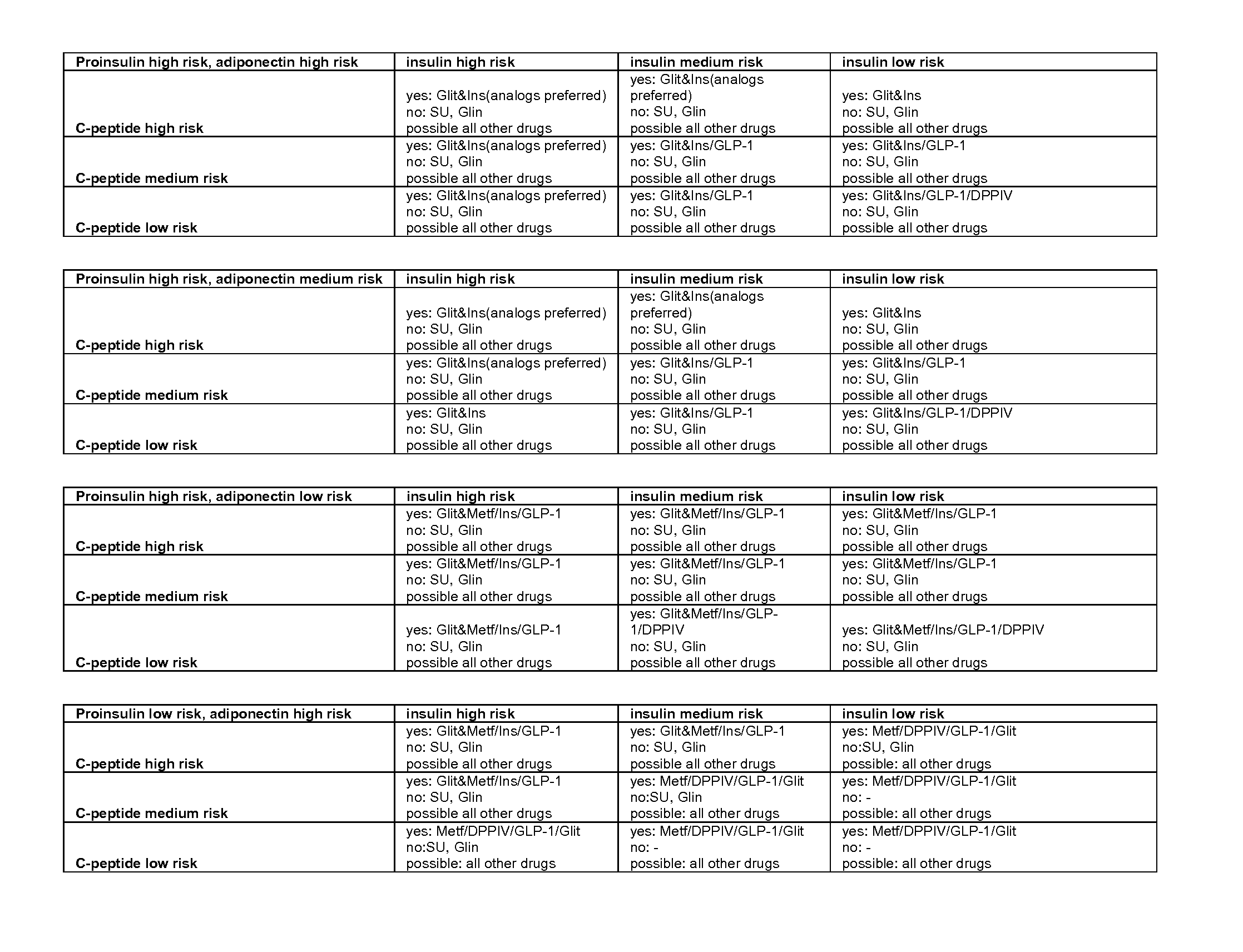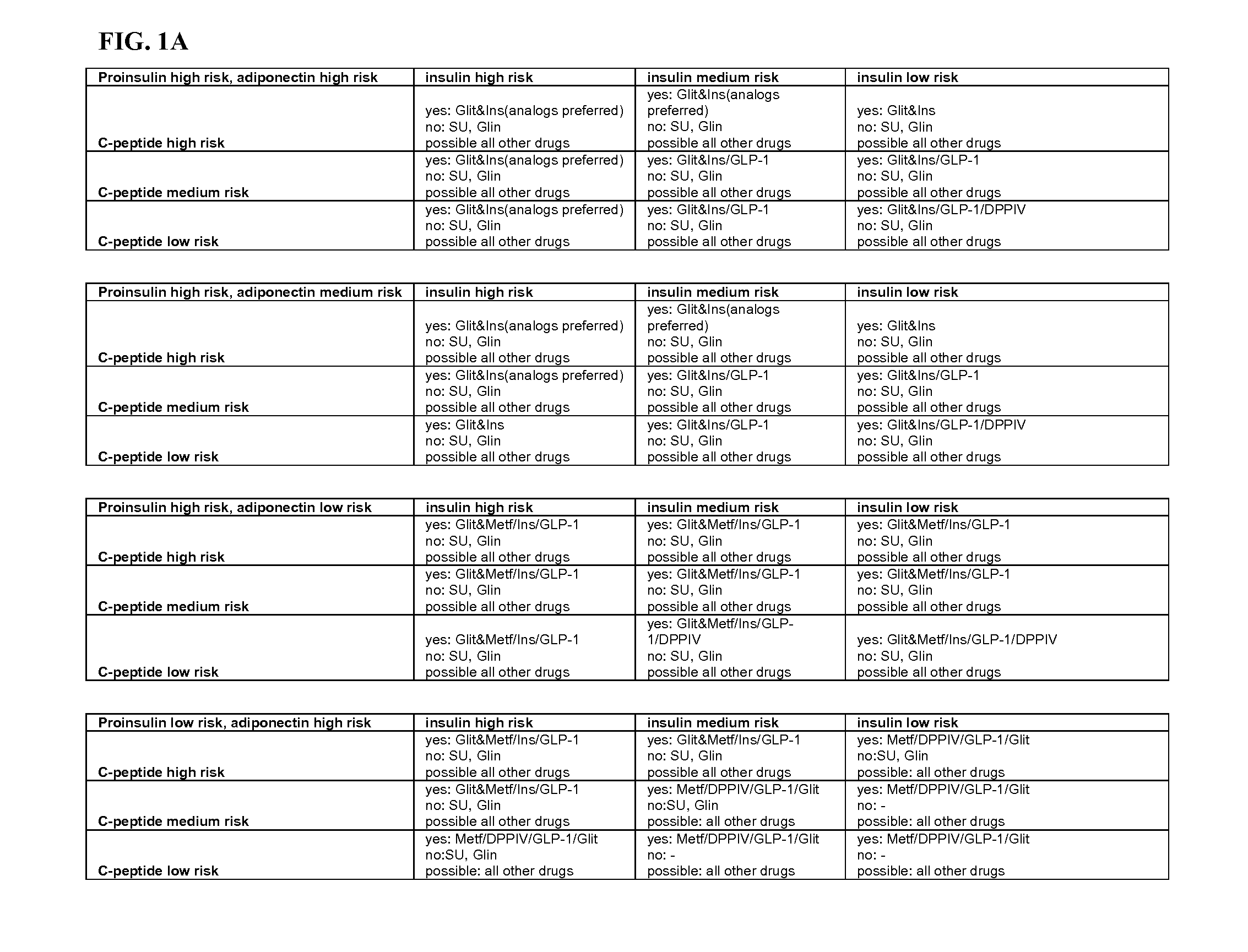Biomarkers for insulin resistance and beta-cell dysfunction
- Summary
- Abstract
- Description
- Claims
- Application Information
AI Technical Summary
Benefits of technology
Problems solved by technology
Method used
Image
Examples
Embodiment Construction
Biomarkers
[0062]Biomarkers may originate from epidemiological studies, animal studies, pathophysiological considerations and end-organ experiments. Ideally, a biomarker will have a high predictive value for a meaningful outcome measure, can be or is validated in appropriately designed prospective trials, reflects therapeutic success by corresponding changes in the surrogate marker results, and should be easy to assess in clinical practice.
[0063]The term “surrogate marker,”“biomolecular marker,”“biomarker” or “marker” (also sometimes referred to herein as a “target analyte,”“target species” or “target sequence”) refers to a molecule whose measurement provides information as to the state of a subject. In various exemplary embodiments, the biomarker is used to assess a pathological state. Measurements of the biomarker may be used alone or combined with other data obtained regarding a subject in order to determine the state of the subject. In one embodiment, the biomarker is “differenti...
PUM
| Property | Measurement | Unit |
|---|---|---|
| Volume | aaaaa | aaaaa |
| Volume | aaaaa | aaaaa |
| Volume | aaaaa | aaaaa |
Abstract
Description
Claims
Application Information
 Login to View More
Login to View More - R&D
- Intellectual Property
- Life Sciences
- Materials
- Tech Scout
- Unparalleled Data Quality
- Higher Quality Content
- 60% Fewer Hallucinations
Browse by: Latest US Patents, China's latest patents, Technical Efficacy Thesaurus, Application Domain, Technology Topic, Popular Technical Reports.
© 2025 PatSnap. All rights reserved.Legal|Privacy policy|Modern Slavery Act Transparency Statement|Sitemap|About US| Contact US: help@patsnap.com



